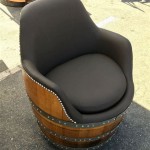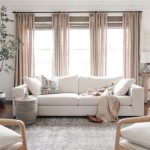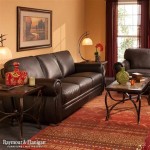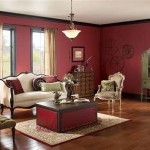Transitional Rugs For Living Room: Balancing Tradition and Modernity
The living room, often considered the heart of a home, is a space designed for relaxation, entertainment, and social interaction. Decorating this central space requires careful consideration of various elements, including furniture, wall color, and accessories. A rug, in particular, plays a significant role in defining the room's aesthetic, adding warmth, texture, and visual interest. Transitional rugs, a popular choice for many homeowners, offer a unique blend of traditional and contemporary styles, creating a harmonious and sophisticated atmosphere.
Transitional rugs are not simply a random combination of traditional and modern features. Instead, they represent a deliberate and thoughtful fusion of these seemingly contrasting styles. They borrow the classic elegance of traditional designs, such as intricate patterns, rich colors, and time-honored motifs, while incorporating the simplicity, clean lines, and muted palettes of modern aesthetics. This creates a versatile and adaptable piece that can seamlessly integrate into a variety of living room decors.
Understanding the nuances of transitional rugs involves examining their key characteristics and how they can be effectively incorporated into a living room setting. The selection process requires careful consideration of factors like size, color, pattern, and material to ensure the rug complements the existing décor and achieves the desired ambiance.
Key Features of Transitional Rugs
Transitional rugs are defined by several distinguishing characteristics that differentiate them from purely traditional or modern counterparts. Recognizing these features is crucial for identifying and selecting the right rug to achieve a specific design goal.
Pattern and Design: Traditional rugs often feature elaborate and ornate patterns, intricate floral motifs, and complex geometric designs. Modern rugs, on the other hand, typically showcase minimalist patterns, abstract art, or bold geometric shapes. Transitional rugs strike a balance between these two extremes. They might incorporate traditional patterns, but with a simplified or stylized approach. The density of the pattern is often reduced, allowing for more open space and a cleaner look. Alternatively, they might feature modern designs rendered in a way that evokes a sense of tradition, such as using aged or distressed textures.
Color Palette: Traditional rugs are known for their rich, saturated colors, such as deep reds, blues, and greens. Modern rugs often employ a more subdued palette of neutral tones, including grays, whites, and beiges, sometimes punctuated by pops of bold color. Transitional rugs tend to favor a muted or softened version of traditional colors. They might use faded or antiqued dyes to create a more subtle and understated look. Neutral colors are frequently used as a base, providing a versatile backdrop for more vibrant accents. The overall color scheme is generally harmonious and tranquil, promoting a sense of calm and sophistication.
Texture and Material: The materials used in transitional rugs are often a mix of traditional and modern choices. Traditional rugs are commonly made from natural fibers like wool, silk, and cotton, which offer durability, softness, and a luxurious feel. Modern rugs may incorporate synthetic materials like nylon, polypropylene, and viscose, which are known for their affordability, stain resistance, and ease of maintenance. Transitional rugs might combine natural and synthetic fibers to achieve a balance of aesthetics, durability, and cost-effectiveness. For example, a rug might be made from a wool and viscose blend, offering the softness and beauty of wool with the sheen and affordability of viscose. Textural variations can also be incorporated to add visual interest and depth, such as high-low piles, hand-knotting details, or deliberately distressed surfaces.
Selecting the Right Transitional Rug for Your Living Room
Choosing the perfect transitional rug for a living room involves careful consideration of several factors to ensure it complements the existing décor and enhances the overall ambiance of the space. The size, color, pattern, material, and placement of the rug all play a crucial role in achieving the desired look.
Size and Shape: The size of the rug should be proportionate to the size of the living room and the furniture arrangement. A rug that is too small can make the room feel disjointed and unbalanced, while a rug that is too large can overwhelm the space. A general rule of thumb is to choose a rug that is large enough to anchor the furniture grouping, with at least the front legs of the sofas and chairs resting on the rug. Alternatively, the rug can be sized to fit entirely within the seating area, creating a defined zone. The shape of the rug should also complement the shape of the room and the furniture. Rectangular rugs are the most common and versatile choice, but square, round, or oval rugs can also be used to add visual interest or highlight specific features of the room. Layering smaller rugs on top of a larger, neutral rug can create a unique and personalized look.
Color and Pattern: The color and pattern of the rug should be chosen to complement the existing color scheme and décor style of the living room. If the room is already filled with bold colors and patterns, a more neutral or understated rug might be a better choice. Conversely, if the room is predominantly neutral, a rug with a more vibrant color or intricate pattern can add a pop of visual interest. Consider the existing furniture upholstery, wall color, and accessories when selecting the rug's color palette. The pattern should also be chosen to complement the overall style of the room. A transitional rug with a simplified traditional pattern can work well in a room with traditional or eclectic décor, while a rug with a modern geometric pattern can add a touch of contemporary flair to a more traditional space. The key is to create a sense of harmony and balance between the rug and the other elements in the room.
Material and Durability: The material of the rug should be chosen based on the lifestyle and traffic levels of the living room. High-traffic areas require rugs made from durable and stain-resistant materials like wool or synthetic fibers. Wool rugs are known for their durability, softness, and natural stain resistance, while synthetic rugs are more affordable and easier to clean. Consider the presence of pets or children when selecting the material. Natural fibers like wool and cotton can be more susceptible to damage from pet claws and accidents, while synthetic fibers are generally more resistant to stains and wear. The construction of the rug also affects its durability. Hand-knotted rugs are generally more durable and long-lasting than machine-made rugs. The pile height of the rug can also affect its comfort and appearance. High-pile rugs are softer and more luxurious, while low-pile rugs are easier to clean and maintain.
Integrating Transitional Rugs into Different Living Room Styles
One of the greatest strengths of transitional rugs is their versatility, allowing them to be seamlessly integrated into a variety of living room styles. Whether the living room is predominantly traditional, modern, eclectic, or bohemian, a carefully chosen transitional rug can enhance the overall aesthetic and create a cohesive and inviting space.
Traditional Living Rooms: In a traditional living room, a transitional rug can soften the formality and add a touch of contemporary appeal. Choose a rug with a traditional pattern, such as a floral or geometric design, but in a muted or faded color palette. Avoid overly ornate or elaborate patterns that could clash with the existing traditional décor. Opt for natural materials like wool or silk to maintain the luxurious feel of the space. Consider a rug with a slightly distressed or aged texture to add character and charm. The rug should complement the existing furniture and accessories, creating a harmonious and elegant atmosphere.
Modern Living Rooms: In a modern living room, a transitional rug can add warmth, texture, and visual interest to the clean lines and minimalist aesthetic. Choose a rug with a simple geometric pattern or an abstract design in neutral colors. Avoid overly busy or ornate patterns that could detract from the modern look. Opt for materials like wool, viscose, or a blend of both to add softness and sheen. Consider a rug with a high-low pile to create textural interest. The rug should serve as a subtle focal point, complementing the modern furniture and accessories without overwhelming the space.
Eclectic Living Rooms: Eclectic living rooms are characterized by a mix of different styles, colors, and textures. A transitional rug can help to tie these disparate elements together and create a cohesive and harmonious space. Choose a rug with a unique and unexpected pattern or color combination. Don't be afraid to experiment with different textures and materials. Consider layering multiple rugs of different sizes, shapes, and patterns to create a personalized and artistic look. The rug should reflect the personality and style of the homeowner, adding a touch of individuality and flair to the eclectic mix.
Bohemian Living Rooms: Bohemian living rooms are known for their relaxed, comfortable, and free-spirited vibe. A transitional rug can enhance this aesthetic by adding warmth, texture, and a touch of global inspiration. Choose a rug with a globally inspired pattern, such as a Moroccan, Persian, or tribal design. Opt for natural materials like wool, cotton, or jute to enhance the earthy and organic feel of the space. Consider a rug with a fringe or tassel detail to add a bohemian touch. The rug should be comfortable and inviting, creating a space where people can relax and feel at ease.

A Guide To Decorating With Transitional Rugs Cyrus

Bliss Rugs Chelsea Transitional Oriental 8 10 X 12 2 Multicolor Polypropylene Indoor Area Rug 9

Nuloom Ozdn18a 406 Akia Lattice High Low Tassel Area Rug 4ft X 6ft

Feizy Laina 39g6f Tan Ivory Gray Area Rug 3 Ft X 10

Transitional Rugs Shopping For Area

8 Tips For Buying Transitional Rugs Interior Decoration Rug Goddess

Vanesa Transitional Medallion Fringe Area Rug

Nuloom Vanita Transitional Southwestern Fringe Area Rug Navy 8x10 Ft

Hauteloom Beren Living Room Bedroom Machine Washable Area Rug Bohemian Modern Farmhouse Moroccan Transitional Ivory Cream White Off 3 X 5 Walmart Com

Nuloom Sarai Transitional Light Gray Indoor Washable Area Rug Ebay








